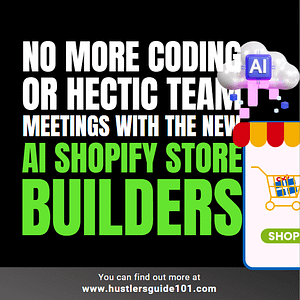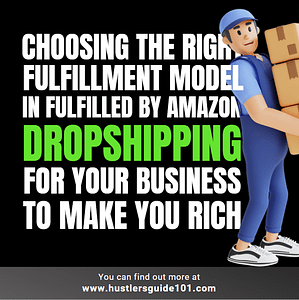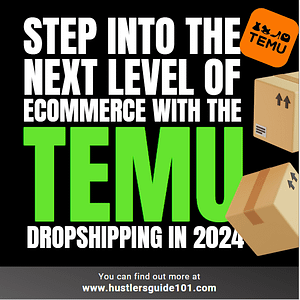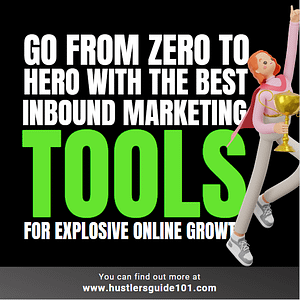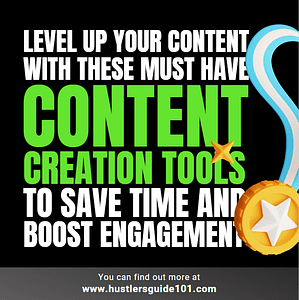
Are you tired of feeling like your website is a revolving door for visitors who never stick around? Or are you frustrated and discouraged by your lack of leads and conversions? It’s time to stop hitting your head against the wall and start building a landing page that works! Which attributes describe a good landing page experience?
This is the question you might be pondering over right now. Don’t worry, I will be answering today in depth. You will discover which attributes describe a good landing page experience. And how to create a page that not only captures visitors’ attention but also inspires them to take action. So buckle up, because it’s time to say goodbye to frustration and hello to success!
What is a landing page?
Picture this: you’re scrolling through your social media feed and an ad catches your eye. It’s for a product or service that you’re interested in, so you click the link. Suddenly, you’re taken to a webpage that’s unlike any other on the website. It’s focused, persuasive, and designed to capture your attention and make you take action. That’s what we call a landing page!
A landing page is a single web page that’s specifically designed to convert visitors into leads or customers. It’s like a virtual sales pitch that’s tailored to a specific audience and designed to persuade them to take a specific action, whether it’s filling out a form, making a purchase, or signing up for a newsletter.
Landing pages are an essential tool for any business looking to increase its conversion rates and drive more revenue. So if you’re looking to take your online presence to the next level, it’s time to start building a landing page that your audience can’t resist by understanding Which attributes describe a good landing page experience!
How a landing page differs from a website homepage?
Ah, the classic homepage vs. landing page debate. Let’s clear up the confusion, shall we?
Think of your website homepage as the front door to your house. It’s the first thing people see when they visit your website and it’s designed to give them an overview of what your business is all about. It’s like a general introduction that leads visitors to different rooms of your house (aka different pages of your website).
Now, a landing page is like a secret room in your house that’s only accessible to those who have the right key (aka those who clicked on your ad or email). It’s designed to be a focused and persuasive page that’s tailored to a specific audience and a specific goal. It’s like a VIP experience that’s designed to convert visitors into leads or customers.
While a homepage is more general and has multiple goals (such as providing information, directing visitors to different pages, and encouraging them to explore), a landing page is highly targeted and has a singular goal (such as filling out a form, making a purchase, or signing up for a newsletter).
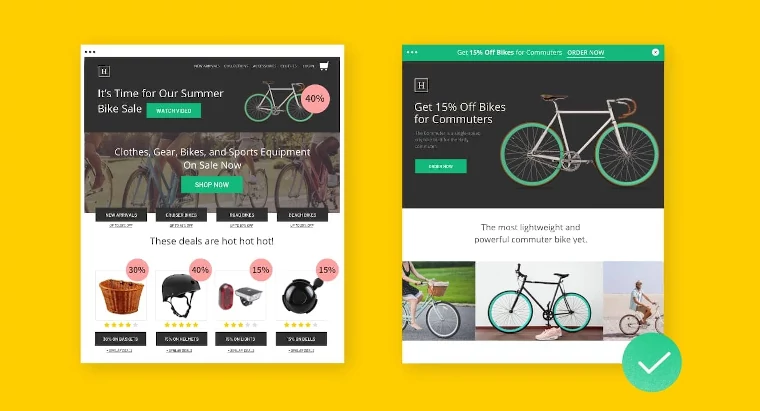
Want to learn more about landing pages and their costs? Check out our guide to find out!
It’s time to jump to our main star section of today ‘Which attributes describe a good landing page experience.’
Which attributes describe a good landing page experience?
Have you ever clicked on an ad or email that caught your attention, only to be disappointed by the landing page that followed? Maybe the page took too long to load, the copy was confusing, or the call-to-action was buried at the bottom of the page.
Whatever the reason, a bad landing page experience can be frustrating and even drive potential customers away.
On the flip side, a good landing page experience can be a game-changer for your business. Not only can it help you attract more visitors to your website, but it can also increase your conversions and drive more revenue.
But don’t just take my word for it. According to a report by Unbounce, businesses with a single, targeted landing page have a 68% conversion rate, while the top 10% of landing pages have conversion rates of 11.45% or higher.
Before getting into detail, you might want to know the key components of a landing page. If yes, give them a read here. Without any further delay, let’s get to which attributes describe a good landing page experience.
Clarity
Clarity is one of the most important attributes of a good landing page experience. Visitors should be able to quickly understand what your page is about, why it matters to them, and what they need to do next. Here are some tips for creating a clear and effective landing page:
Clear and concise headline
The headline should be clear, concise, and attention-grabbing, conveying the main benefit of your product or service in just a few words. A good headline should capture visitors’ attention and entice them to keep reading. Here are some tips for creating a clear and concise headline:
- Focus on the main benefit: Your headline should convey the main benefit of your product or service, highlighting what makes it unique and valuable to your target audience.
- Use clear and simple language: Avoid using industry-specific jargon or buzzwords that might confuse or alienate visitors. Use simple, easy-to-understand language that resonates with your audience.
- Keep it short and sweet: Your headline should be brief and to-the-point, ideally no more than 10-12 words. Use strong, active verbs and avoid unnecessary words or filler.
- Make it stand out: Use a contrasting color, bold text, or a larger font size to make your headline stand out from the rest of the page.
Remember, your headline is the first thing visitors will see when they land on your page, so make sure it grabs their attention and encourages them to keep reading.

Relevant and specific subheadings to break up content
Subheadings are an effective way to break up content on your landing page and guide visitors through your message. Relevant and specific subheadings can help visitors quickly understand the main points of your page and find the information they’re looking for.
Here are some tips for creating effective subheadings:
- Use a hierarchical structure: Your subheadings should follow a clear hierarchy, with larger and more prominent headings introducing major sections of your page, and smaller headings used to break up content within those sections.
- Keep it relevant and specific: Your subheadings should be relevant to the content they introduce and specific enough to convey the key points of that content. Avoid generic headings that don’t provide much context or value.
- Use action-oriented language: Use action-oriented language in your subheadings to help visitors understand what they can expect to find in each section of your page. Use verbs that convey a sense of action, such as “Discover,” “Learn,” or “Explore.”
- Make it scannable: Use formatting such as bold text or bullet points to make your subheadings stand out and make your page more scannable. This can help visitors quickly find the information they’re looking for without having to read every word on the page.
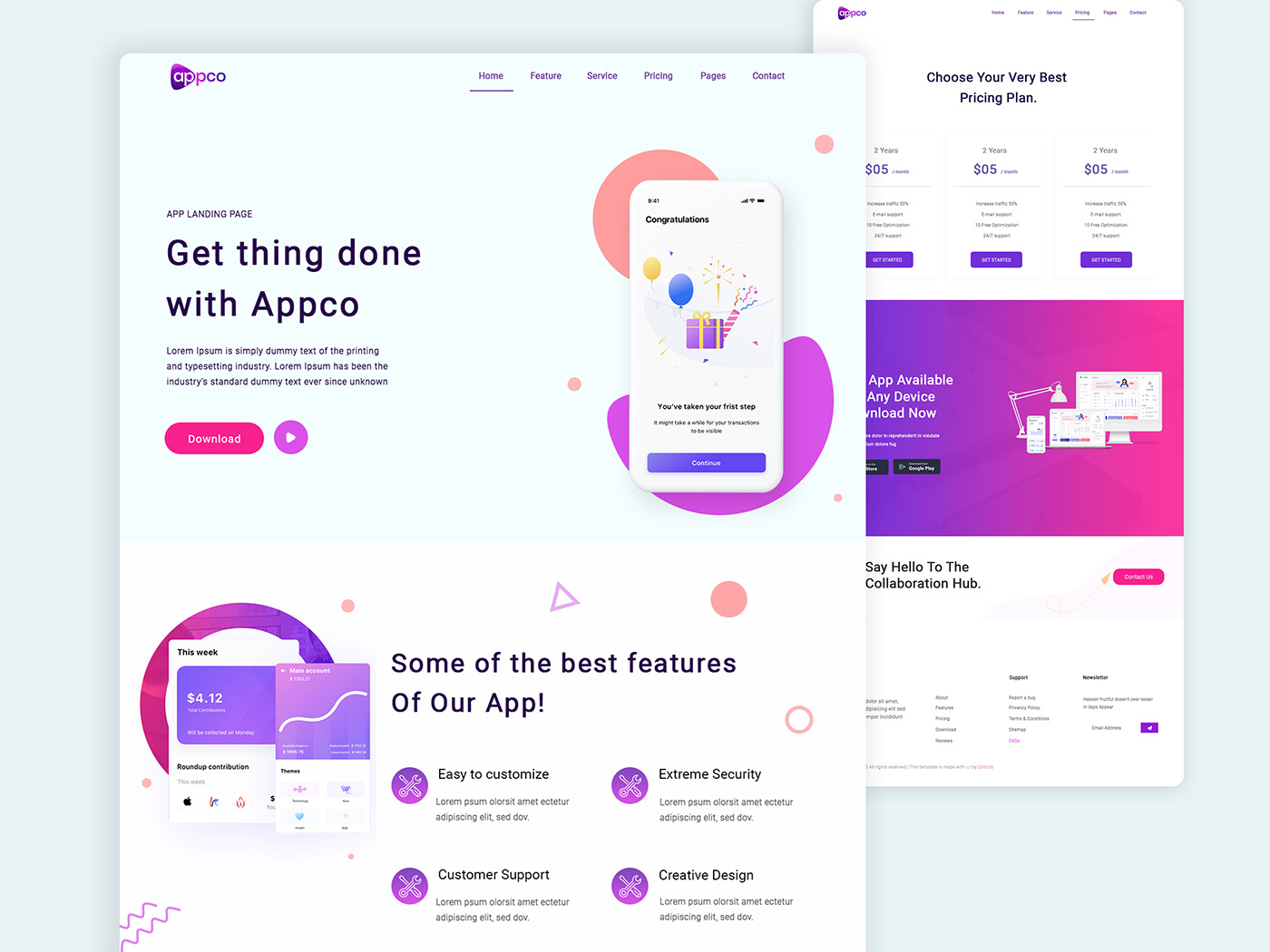
Brief and to-the-point content
When it comes to creating effective landing pages, content is king. Your content should be brief, to-the-point, and focused on the visitor’s needs and benefits.
Here are some tips for creating content that resonates with your audience:
- Focus on benefits: Rather than simply listing features, focus on the benefits of your product or service. Highlight how it solves a problem or meets a specific need for your target audience.
- Use persuasive language: Use persuasive language that speaks directly to your visitors’ needs and desires. Use words and phrases that convey a sense of urgency, such as “limited time offer” or “don’t miss out.”
- Keep it concise: Your content should be brief and easy to read. Avoid long paragraphs or excessive detail that might overwhelm or bore visitors. Instead, focus on delivering a clear and concise message that captures their attention and interest.
- Use visuals: Visuals such as images, videos, or infographics can help break up text and make your content more engaging. Use visuals that support your message and help visitors understand your product or service.

Clear and prominent call-to-action
A clear and prominent call-to-action (CTA) is one of the most important elements of a successful landing page. Your CTA should be prominently displayed and stand out from the rest of the page to encourage visitors to take action.
Here are some tips for creating a CTA that stands out:
- Use contrasting colors: Your CTA should be a contrasting color to the rest of your page to make it stand out. Use a color that complements your brand but is different enough to catch visitors’ attention.
- Use clear and action-oriented language: Your CTA should clearly communicate what action visitors should take, using action-oriented language such as “Download Now” or “Sign Up Today.” Avoid vague language that might confuse or mislead visitors.
- Make it prominent: Your CTA should be prominently displayed on the page, ideally above the fold so visitors can see it without scrolling. Use a larger font size and make sure it’s placed in a prominent location.
- Use whitespace: Whitespace can help make your CTA stand out by creating contrast and drawing the eye. Use whitespace to separate your call-to-action from the rest of the page and make it more prominent.
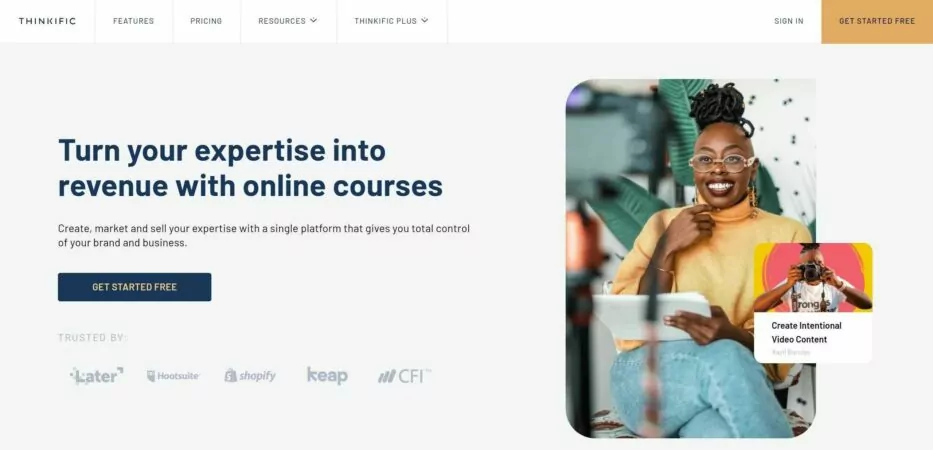
Relevance
Relevance is key when it comes to creating a successful landing page. Your landing page should be closely aligned with the ad or promotion that drove visitors to it, and it should be relevant to their interests and needs.
Here are some tips for creating a relevant landing page:
Matching the ad message to the landing page content
When a visitor clicks on an ad or promotion, they expect to be taken to a landing page that matches the message of that ad. If the landing page doesn’t deliver on that promise, visitors may become confused or frustrated and leave your site.
To create a landing page that matches the ad message, make sure the headline and copy of your landing page are closely aligned with the message of your ad. Use similar language and make sure the benefits and features promised in your ad are highlighted on the landing page.
For example, if you’re running a Facebook ad promoting a sale on winter coats, make sure the headline of your landing page includes the words “Winter Coat Sale” and emphasizes the discount being offered.
Use images of winter coats and showcase the different styles and colors available. By matching the ad message to the landing page content, you’ll create a consistent experience for visitors and increase the likelihood of conversion.

Personalization of the landing page
Wondering how personalization comes in the list of ‘Which attributes describe a good landing page experience.’ Personalization is a powerful way to make your landing page more relevant to each visitor and increase the chances of conversion. By using data about a visitor’s demographics or behavior, you can customize your landing page to better meet their needs and interests.
One way to personalize your landing page is by using location-based targeting. If your business operates in multiple locations, you can create different versions of your landing page that are tailored to each region. This can include using location-specific language, images, and even special offers or promotions.
You can also personalize your landing page based on the visitor’s interests or behavior. For example, if a visitor has previously visited your site and shown an interest in a particular product or service, you can show them a landing page that highlights that offering.
Similarly, if a visitor arrives at your landing page via a specific ad or promotion, you can show them a version of the landing page that is customized to that campaign.
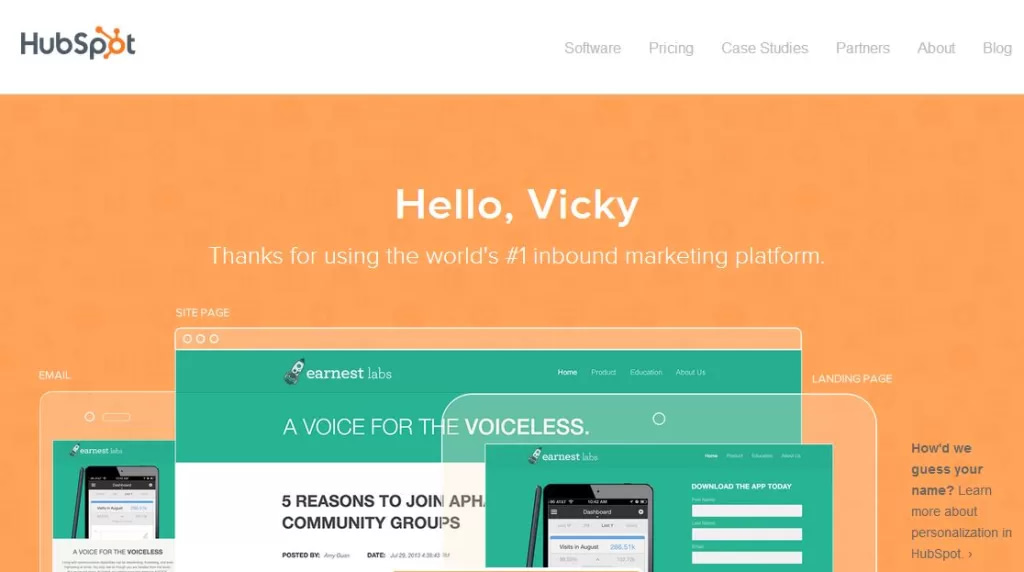
Use of high-quality images or videos
The use of high-quality images or videos that are relevant to the offer can be a critical factor in creating a successful landing page. Visual content can help visitors better understand your product or service and make an emotional connection with your brand.
When selecting images or videos for your landing page, make sure they are high-quality and visually appealing. Avoid using stock images that look generic or unprofessional. Instead, use original images or videos that showcase your product or service in a visually appealing way.
It’s also important to ensure that the images or videos you choose are relevant to the offer. If you’re promoting a specific product or service, make sure the visual content on your landing page features that offering.
For example, if you’re selling a new line of shoes, include high-quality images of the shoes from multiple angles and in different colors.
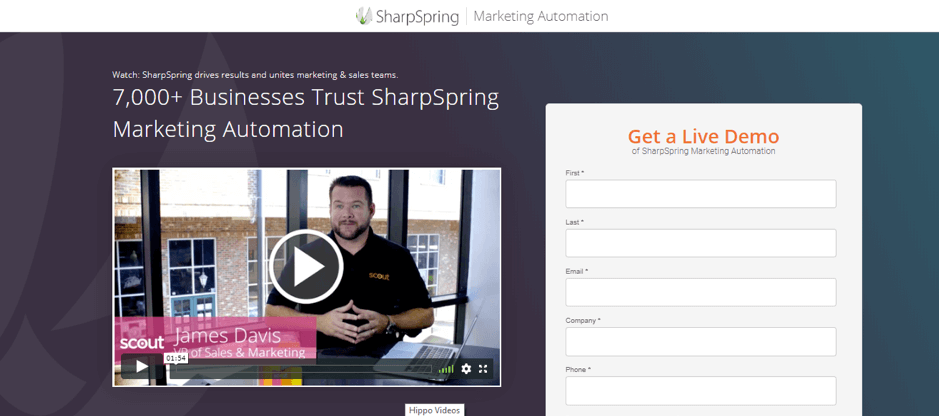
Credibility
Credibility is a critical attribute of a good landing page experience. A landing page that lacks credibility may not convert visitors into leads or customers. Here are some ways to establish credibility on your landing page:
Customer testimonials or reviews
When it comes to establishing credibility on your landing page, customer testimonials or reviews are an excellent tool. They provide social proof that your product or service has helped others, which can help build trust with potential customers. Here are some tips on how to effectively use customer testimonials or reviews on your landing page:
- Use Real and Authentic Testimonials: Make sure that the testimonials or reviews you use are real and authentic. Avoid fabricating or embellishing testimonials, as this can quickly backfire and damage your credibility. You can ask satisfied customers to leave a review or testimonial, and then choose the ones that best represent your product or service.
- Include Specific Details: To make your testimonials more effective, try to include specific details. Generic or vague testimonials can come across as less credible. Specific details about how your product or service helped a customer can help potential customers relate and envision how it can benefit them.
- Showcase the Best Testimonials: Not all testimonials are created equal. Some may be more compelling than others. Consider featuring the best testimonials prominently on your landing page to increase their impact. You can also group similar testimonials together to highlight common benefits or features of your product or service.
- Use Visuals to Enhance Testimonials: Visuals can help enhance the impact of testimonials. Consider using pictures or videos of satisfied customers along with their testimonials. This can add a human element and help potential customers connect with your product or service on a personal level.
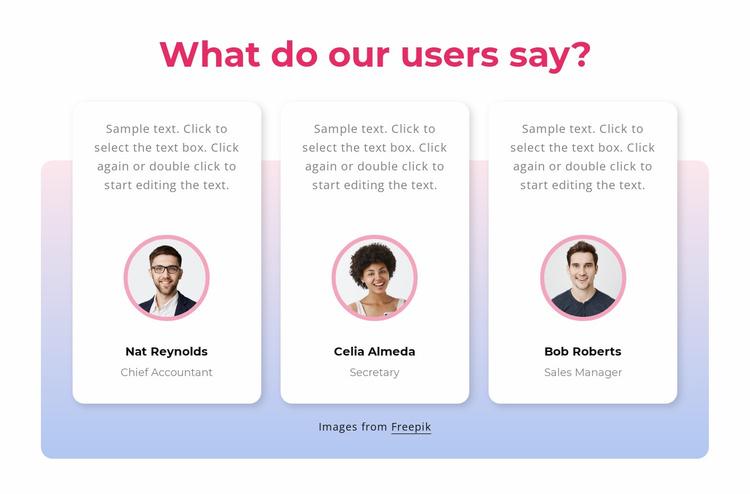
Trust badges or certifications
Trust badges or certifications are symbols or logos that indicate that your business is legitimate and trustworthy. Including trust badges on your landing page can help establish trust with potential customers and increase your credibility.
Here are some tips on how to effectively use trust badges or certifications on your landing page:
- Use Recognizable Trust Badges: When choosing trust badges or certifications, it’s essential to use ones that are recognizable and well-respected. Examples of well-known trust badges include McAfee, Norton, and Better Business Bureau (BBB). These badges are often associated with trust and security, and including them on your landing page can help establish credibility with potential customers.
- Place Trust Badges Strategically: Where you place trust badges on your landing page can impact their effectiveness. Consider placing them prominently in areas where visitors are most likely to look, such as near the call-to-action or checkout button. This way, potential customers will see the badges and associate your brand with trust and security.
- Use Relevant Trust Badges: It’s important to use trust badges or certifications that are relevant to your business or industry. For example, if you sell health supplements, including a certification from a respected organization like the National Institutes of Health (NIH) can help establish credibility with potential customers.
- Explain What Trust Badges Mean: While trust badges are often recognizable, it’s still important to explain what they mean. Providing a brief description of what each badge represents can help educate visitors and reinforce the credibility of your business.
Clear and easy-to-find contact information
Visitors who are interested in your product or service may have questions or concerns, and providing clear contact information can help address those issues and increase their confidence in your brand.
Here are some tips on how to effectively use contact information to enhance your credibility:
- Display Contact Information Prominently: Make sure your contact information is prominently displayed on your landing page. Visitors should be able to find your phone number, email address, and physical address easily. You can include your contact information in the header, footer, or on a dedicated contact page.
- Make It Easy to Contact: You Ensure that it’s easy for visitors to contact you. You can include a contact form that visitors can fill out to send you a message. You can also provide a live chat option, which allows visitors to contact you in real-time. The easier it is for visitors to contact you, the more likely they are to reach out and engage with your business.
- Provide Multiple Contact Methods: Different visitors may prefer to contact you in different ways. Some may prefer email, while others may prefer phone or live chat. By providing multiple contact methods, you can accommodate different visitor preferences and make it more likely that they will contact you.
- Be Responsive: Make sure to respond promptly and professionally to any messages or inquiries you receive. This can help build trust and establish your brand as reliable and customer-focused. Ideally, you should respond to all messages within 24 hours or less.
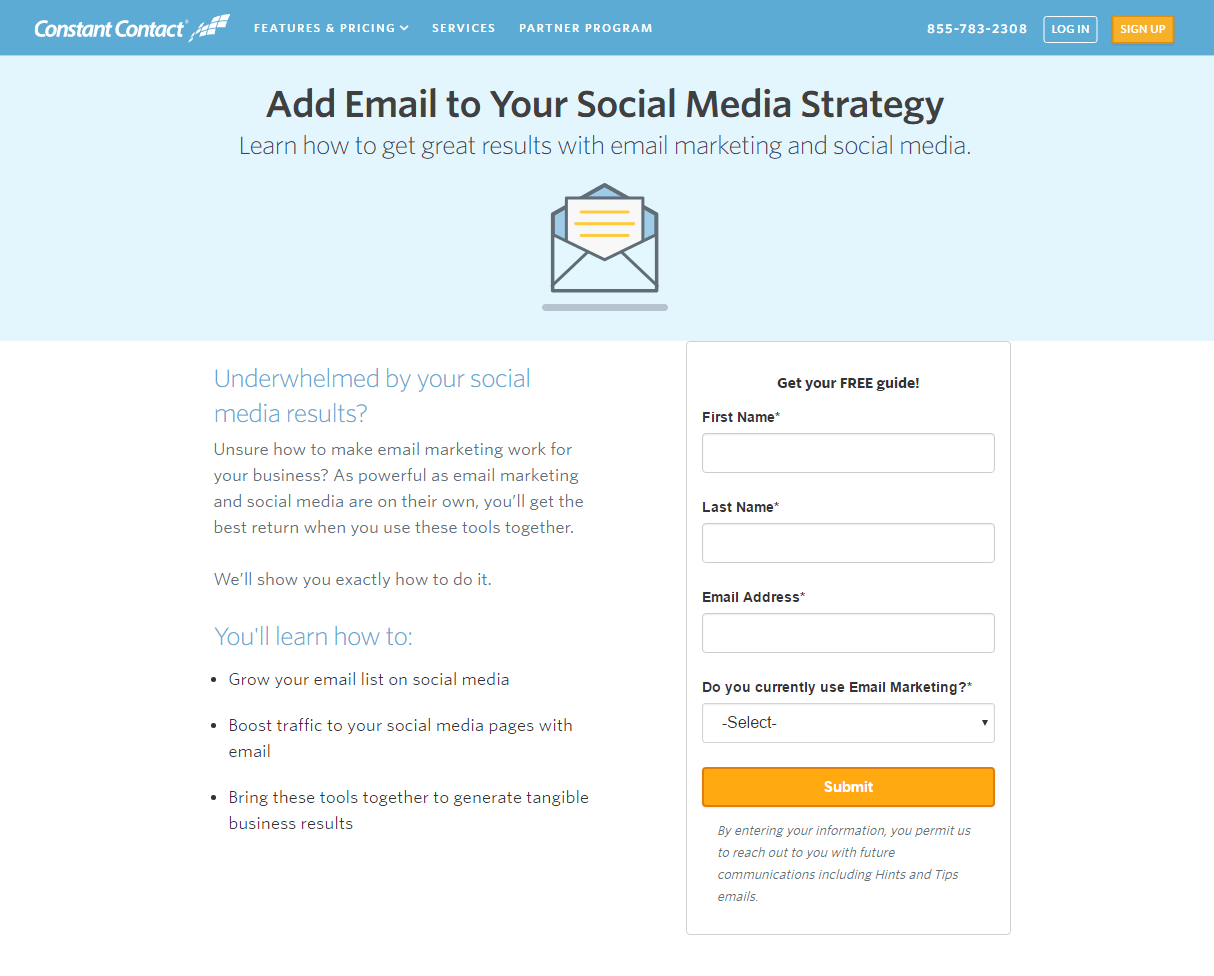
Accessibility
When designing a landing page, it’s important to keep accessibility in mind. Not only is it the right thing to do. But it also ensures that your page can be accessed and used by as many people as possible.
This includes people with disabilities who use assistive technologies to access the internet. Some ways to make your landing page accessible include using alt tags for images, using clear and simple language, and making sure the page is navigable with a keyboard.
Easy navigation with a clear path to conversion
Easy navigation with a clear path to conversion is a critical aspect of a good landing page. Visitors should be able to quickly and easily find the information they need. Understand how to make them take the desired action.
This can be achieved by having a clear and concise headline. Using bullet points to break up text. And having a prominent call to action button. Additionally, minimizing distractions and focusing on the main message can help visitors stay on track and convert.
Include a prominent call-to-action (CTA) that is easy to find and stands out from the rest of the content. Use contrasting colors and design elements to draw attention to the CTA button. This will ensure that visitors know exactly what action they should take and how to take it.
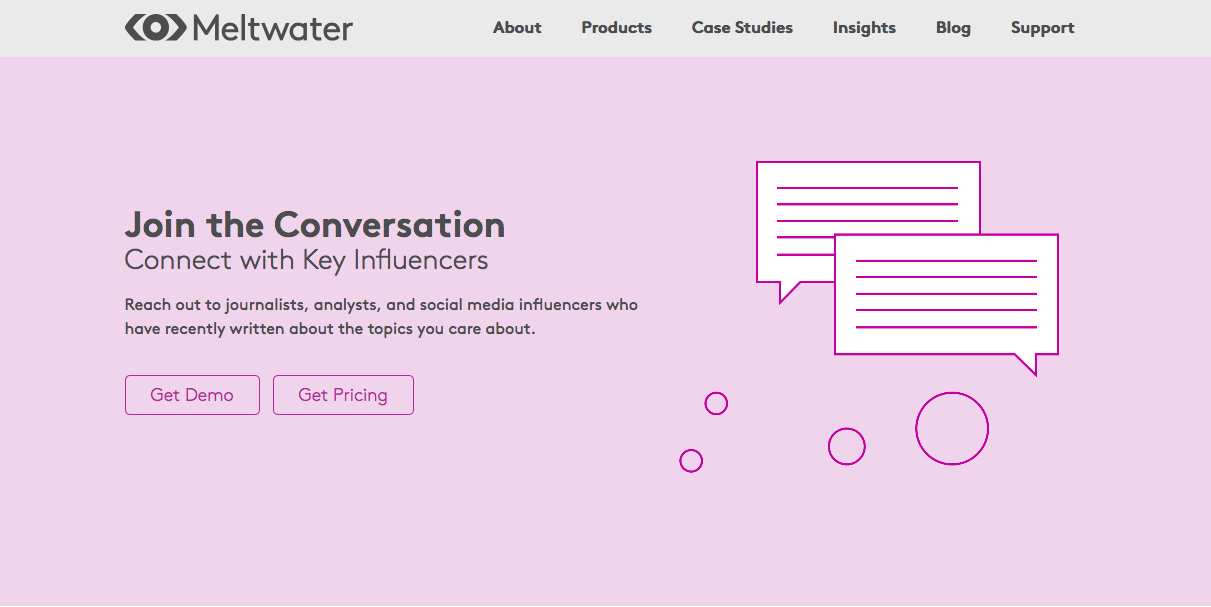
Fast loading time that reduces bounce rate
Fast loading time is another critical attribute of a good landing page. Visitors expect pages to load quickly. A slow loading page can negatively impact the user experience and increase the bounce rate. Here are some tips for ensuring fast loading time and reducing the bounce rate:
- Optimize images and videos: Large images and videos can significantly slow down a landing page. Optimize images by compressing them to reduce their file size without compromising quality. Consider using a CDN to serve images and videos from a server closer to the visitor. This reduces loading time.
- Use caching: Caching stores frequently accessed data on the visitor’s device or browser, reducing the time needed to retrieve data on subsequent page loads. Use browser caching and server-side caching to speed up your landing page.
- Minimize HTTP requests: Each element on a page requires an HTTP request to the server, and too many requests can slow down a page. Minimize the number of HTTP requests by reducing the number of elements on the page or combining multiple elements into a single request.
- Use a content delivery network (CDN): A CDN stores copies of your landing page on servers around the world, ensuring that visitors can quickly access your page from a server close to their location.
- Choose a reliable hosting provider: The quality of your hosting provider can significantly impact your landing page’s loading time. Choose a reliable hosting provider with fast servers and minimal downtime.
- Use a performance monitoring tool: Use a performance monitoring tool to track your landing page’s loading time and identify any bottlenecks or issues. Regularly monitor and optimize your landing page to ensure that it loads quickly and provides a positive user experience.

Mobile responsiveness to cater to visitors
With more and more people accessing the internet through their mobile devices, mobile responsiveness is a critical attribute of a good landing page. Visitors should be able to access your landing page from any device, including smartphones and tablets, and have a positive user experience. Here are some tips for ensuring mobile responsiveness on your landing page:
- Use responsive design: Use responsive design to ensure that your landing page automatically adjusts to the size and orientation of the visitor’s device. This will provide a consistent user experience across all devices and improve engagement and conversion rates.
- Optimize images and videos: Mobile devices have smaller screens and slower internet connections than desktop computers, so it’s essential to optimize images and videos to reduce loading time.
- Use larger fonts: Text that is too small can be difficult to read on a mobile device. Use larger fonts and avoid using too much text to ensure that visitors can easily read and understand the content.
- Simplify navigation: Simplify navigation on your landing page to make it easy for visitors to find what they need. Use clear and concise headlines and bullet points to break up content into easily scannable sections.
- Test your landing page on different devices: Test your landing page on a variety of devices, including smartphones and tablets, to ensure that it looks and functions correctly. Regularly test and optimize your landing page to provide a positive user experience for all visitors

Persuasion
The purpose of a good landing page is to persuade visitors to take a specific action, such as making a purchase or filling out a form. Here are some attributes of a persuasive landing page:
Persuasive copy that highlights benefits
The copy on your landing page should be persuasive and focus on highlighting the benefits of your product or service. It should also address any objections that visitors may have and provide them with the information they need to make a decision. Here are some tips for writing persuasive copy on your landing page:
- Focus on benefits: Rather than listing features, focus on the benefits that your product or service provides. For example, if you’re selling a weight loss product, focus on the benefits of losing weight, such as improved health, increased energy, and improved self-confidence.
- Use customer-focused language: Use language that speaks directly to the visitor and focuses on their needs and desires. Use “you” instead of “we” to make the copy more customer-focused.
- Address objections: Identify any objections that visitors may have and address them in the copy. For example, if you’re selling a high-priced product, address any concerns visitors may have about the cost and provide them with information about the value they’ll receive.
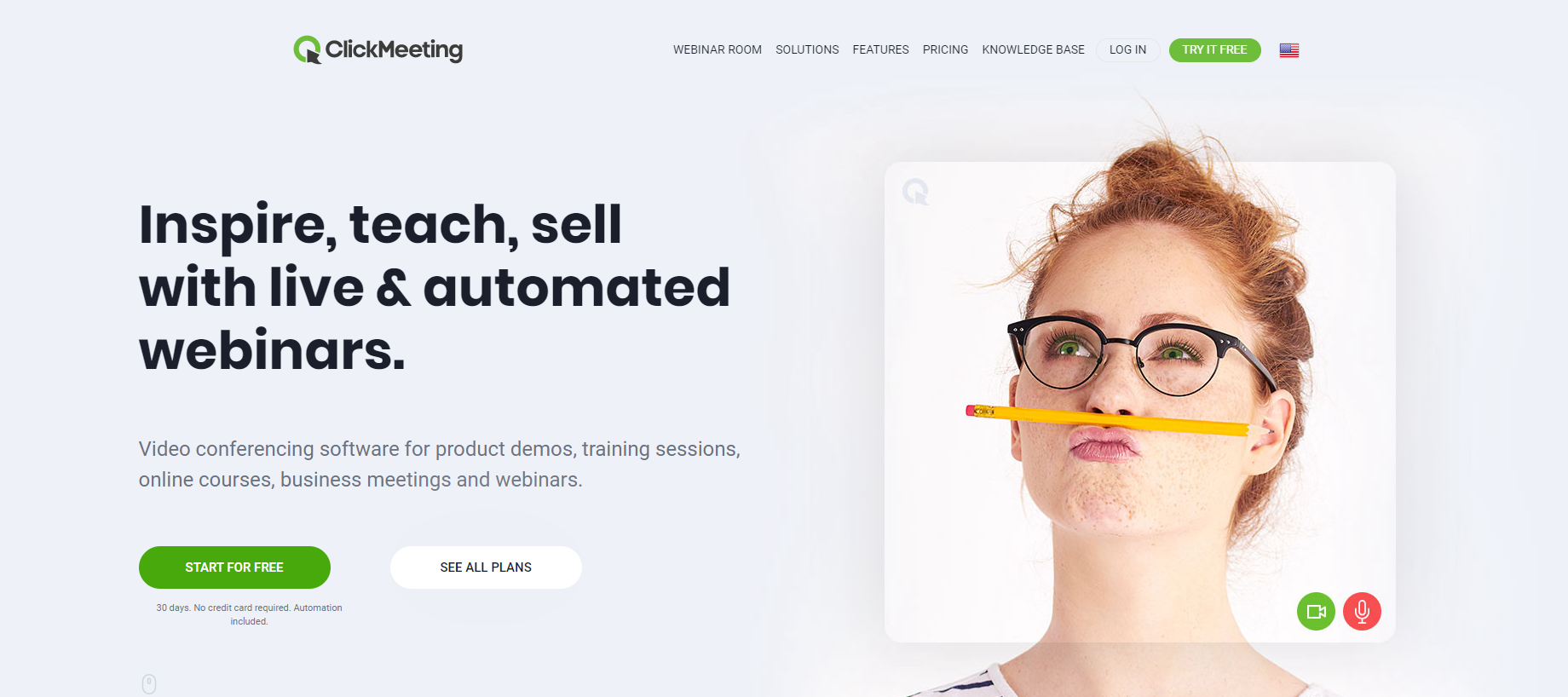
Visual cues or buttons that guide visitors toward the call-to-action
Visual cues and buttons are an important part of a good landing page experience. They can guide visitors towards the call-to-action and encourage them to take action. Here are some tips for using visual cues and buttons effectively:
- Use contrasting colors: Use colors that contrast with the rest of the page to make the call-to-action stand out. For example, if your landing page is mostly white, use a bright green or red for the call-to-action button.
- Make the button prominent: Make sure that the call-to-action button is prominent and easy to find. Use a large button that stands out from the rest of the page.
- Use clear and concise language: Use clear and concise language on the button, such as “Buy Now” or “Sign Up Today”. Use language that clearly communicates the action that visitors need to take.
- Use multiple buttons: Use multiple buttons throughout the page to make it easy for visitors to take action. For example, you could include a button at the top of the page, in the middle of the page, and at the bottom of the page.
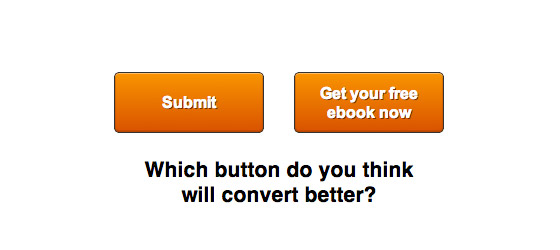
Testing and Optimization
Testing and optimization are critical components of a good landing page experience, as they can help you improve conversion rates and achieve your marketing goals. Let’s get some tips on how to test and optimize your landing page:
Continuous testing and optimization for improving conversion rates
Continuous testing and optimization are critical components of a good landing page experience, as they can help you improve conversion rates and achieve your marketing goals. Here are some tips for continuous testing and optimization:
- Set clear goals: Before you start testing, make sure you have clear goals for your landing page. What action do you want them to take? By setting clear goals, you can focus your testing efforts and measure the success of your landing page.
- Identify areas for improvement: Use analytics tools to identify areas for improvement on your landing page. Look for metrics such as bounce rate, time on page, and conversion rate to identify areas where visitors are struggling or leaving the page.
- Create variations: Once you’ve identified areas for improvement, create variations of your landing page to test. Make sure to only test one element at a time, such as the headline or the call-to-action button, to accurately measure the impact of each change.
- Test and measure: Use A/B testing to compare the performance of your original landing page to your variations. Test each variation for a set amount of time and measure the results to see which version performs better.
- Iterate and improve: Use the insights from your testing to make iterative improvements to your landing page. Continuously test and optimize your landing page to improve its performance and achieve your marketing goals.

Analytics to track visitor behavior and make data-driven decisions
Analytics is a powerful tool that can help you track visitor behavior on your landing page. And make data-driven decisions to improve its performance. Here are some tips for using analytics to track visitor behavior and make data-driven decisions:
- Set up analytics: Make sure you have analytics tools set up on your landing page to track visitor behavior. Tools like Google Analytics provide you with valuable data on metrics like bounce rate, time on page, and conversion rate.
- Track visitor behavior: Use your analytics tools to track visitor behavior on your landing page. Look for patterns in how visitors interact with your page. Such as where they click or how far they scroll down the page.
- Identify areas for improvement: Use the data from your analytics tools to identify areas for improvement on your landing page. Look for pages with high bounce rates or low conversion rates, and identify areas of your page where visitors may be getting stuck.
- Make data-driven decisions: Use the insights from your analytics tools to make data-driven decisions about how to improve your landing page. For example, if your data shows that visitors are spending a lot of time on a particular section of your page, you may want to consider adding more content or information to that section.
- Continuously optimize: Use your analytics tools to continuously optimize your landing page. Monitor the impact of any changes you make and adjust your page accordingly to improve its performance.
Wondering about the do’s and don’ts of a landing page? Here is an in-depth guide.
Hot FAQs on which attributes describe a good landing page experience?
And we are done with our detailed guide on which attributes describe a good landing page experience. Wait! Wait! Do you have any confusion related to landing pages? Don’t worry, let’s get to them.
What is the main purpose of a landing page?
The main purpose of a landing page is to convert visitors into leads or customers by offering a specific product, service, or piece of content. A landing page is designed to be a focused and persuasive page with a clear call-to-action, and it often contains a form to capture visitor information.
How do you measure a successful landing page?
You can measure the success of a landing page by several metrics, including the conversion rate, bounce rate, time on page, and engagement rate. The conversion rate is the most important metric, as it measures the percentage of visitors who take the desired action on the landing page, such as filling out a form or making a purchase.
What is a good landing page load time?
A good landing page load time is between 1-3 seconds. The faster the page loads, the better the user experience. And the higher the chances of visitors staying on the page and taking the desired action.
What is KPI for the landing page?
KPI (Key Performance Indicator) for a landing page is the metric that is most important to achieving the goal of the landing page. It varies depending on the purpose of the landing page. But typical KPIs for a landing page include conversion rate, click-through rate, bounce rate, engagement rate, and cost per conversion. These KPIs help measure the effectiveness of the landing page and identify areas for improvement.
Also read: How to create a landing page on Shopify in 4 simple steps?
Wrapping up – Which attributes describe a good landing page experience
Congratulations! You now have the secret sauce to create a landing page that not only attracts visitors but also converts them into loyal customers. Make sure you don’t miss any point we discussed today under the roof of ‘Which attributes describe a good landing page experience?’
By implementing the attributes of a good landing page experience, you’ll not only increase your revenue but also feel a sense of pride and accomplishment. The thrill of seeing your conversion rates skyrocket and the satisfaction of knowing that you are providing value to your audience is unbeatable.
Also read: How to create a landing page on Squarespace?


